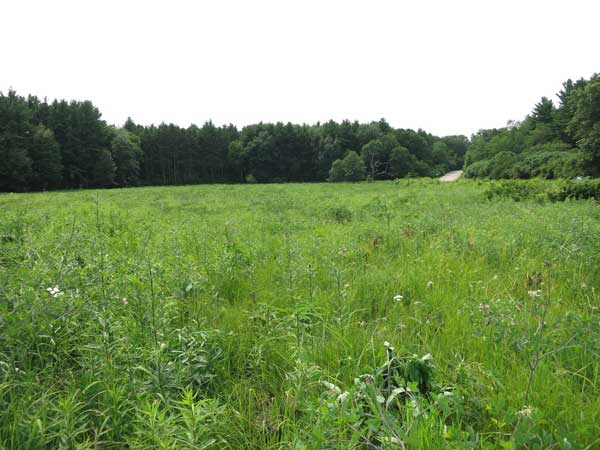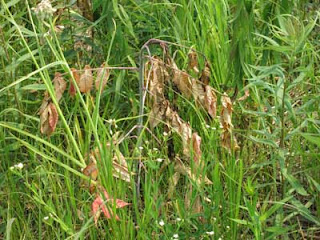State Natural Areas volunteer event at Pleasant Valley Conservancy
Yesterday the rains ended just in time for the Wisconsin State Natural Areas volunteers potluck lunch and tour at Pleasant Valley Conservancy.
A large turnout made the event especially nice. There were quite a few attendees from southeastern Wisconsin and from the Prairie Bluff Chapter (Green County) of the Prairie Enthusiasts.
The event was organized by DNR volunteer coordinator Jared Urban and State Natural Areas crew chief Nate Fayram. The 3-hour tour was led by Kathie and Tom Brock.
The Conservancy was looking especially nice after the 2 inch rain the night before. This time of year warm-season grasses are especially lush, making the large hill prairies look very attractive.
The tour focused especially on the major oak savanna restoration work that has been an ongoing activity at PVC for the past 20 years. The tour ended with a walk along the Diagonal Trail that crosses the middle of the bluff prairie.
A large turnout made the event especially nice. There were quite a few attendees from southeastern Wisconsin and from the Prairie Bluff Chapter (Green County) of the Prairie Enthusiasts.
The event was organized by DNR volunteer coordinator Jared Urban and State Natural Areas crew chief Nate Fayram. The 3-hour tour was led by Kathie and Tom Brock.
The Conservancy was looking especially nice after the 2 inch rain the night before. This time of year warm-season grasses are especially lush, making the large hill prairies look very attractive.
The tour focused especially on the major oak savanna restoration work that has been an ongoing activity at PVC for the past 20 years. The tour ended with a walk along the Diagonal Trail that crosses the middle of the bluff prairie.
 |
| Jared Urban (left) conferring the volunteer of the year award to Tom Mitchell of Monroe, Wisconsin |









